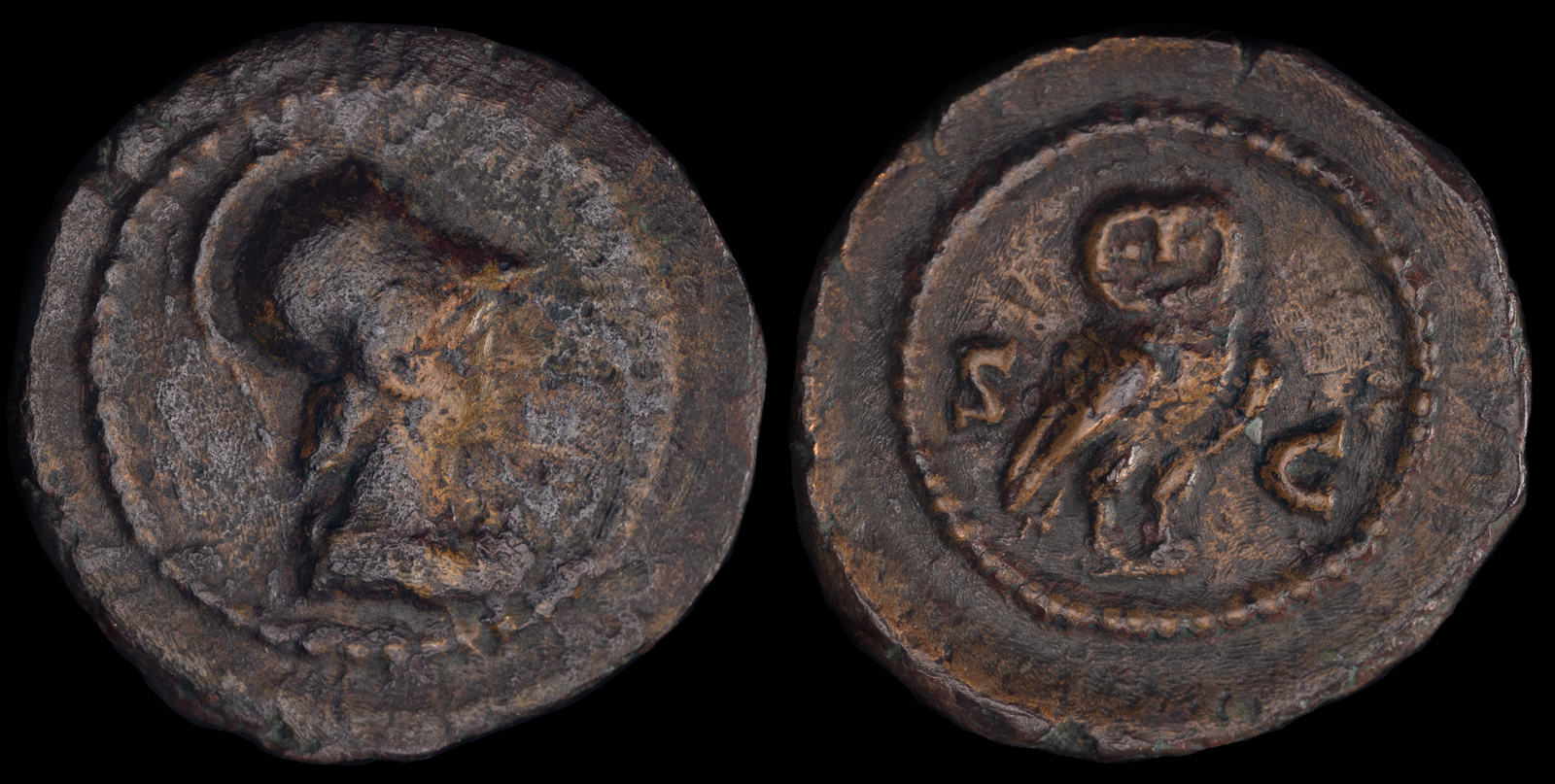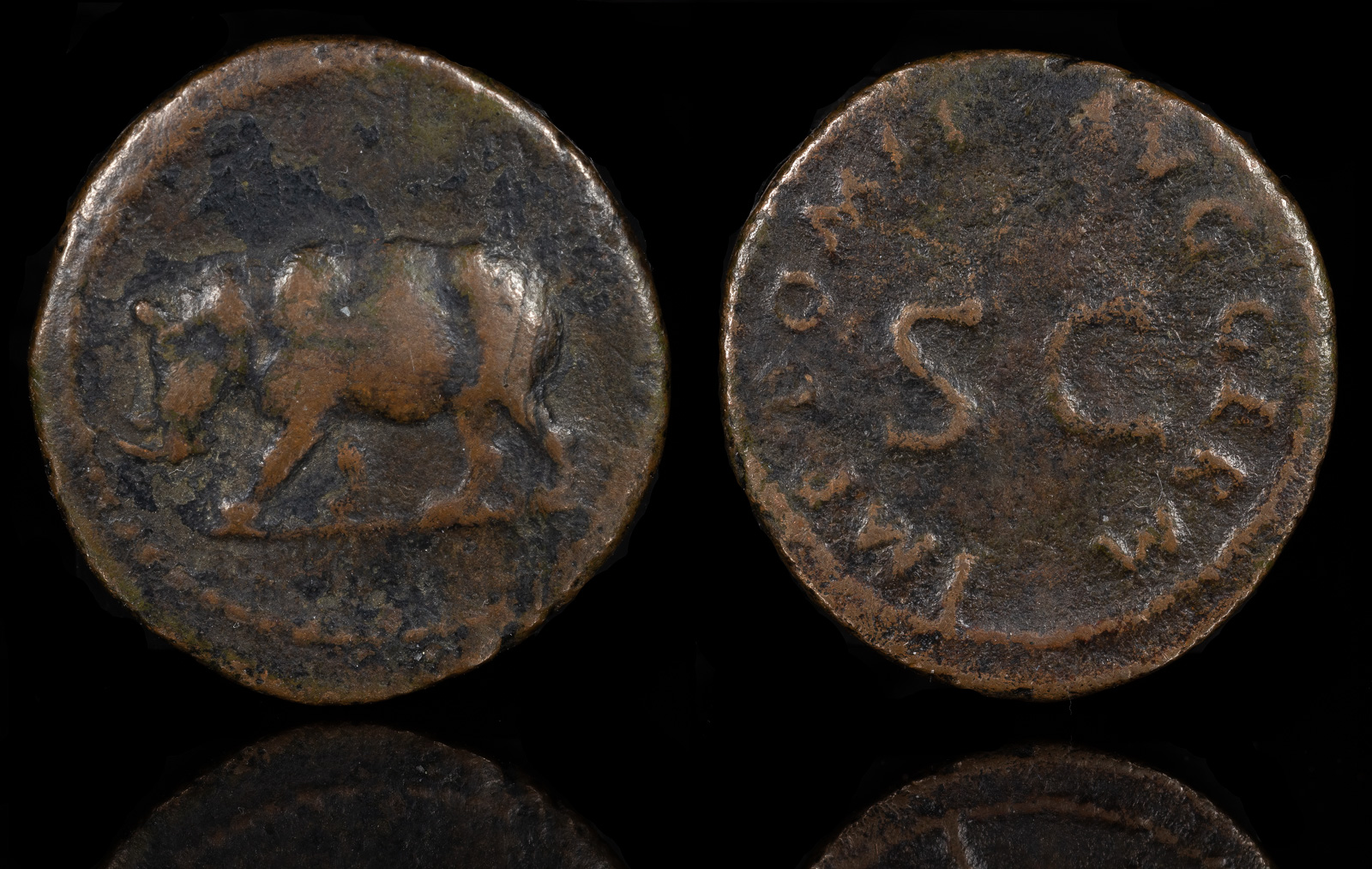Quadrans
View All Tags
The quadrans emerged in the 3rd century BCE, during a period when the Roman economy was expanding, and a need for smaller denominations arose to facilitate everyday transactions. Before the introduction of the quadrans, the smallest Roman coin was the as, but as the empire grew and markets became more complex, smaller fractions of the as became necessary. The quadrans was introduced as part of a broader system of coinage reform, which was designed to streamline currency and make trade and taxation more efficient.
The quadrans typically featured simple designs, often with a depiction of a symbol representing Roman values or a specific deity. Its reverse side usually displayed a variety of motifs, including images of gods, animals, or tools, reflecting the diverse themes Roman coinage could carry. The quadrans was used mainly for everyday transactions, serving as a low-value coin for smaller purchases, and it circulated widely in local markets throughout the Roman Empire.
Despite its relatively low value, the quadrans remained in use for several centuries. However, over time, as inflation and changes in the economy took place, the quadrans became obsolete, particularly during the reign of Emperor Diocletian in the 3rd century CE, when the Roman coinage system underwent major restructuring. By then, smaller denominations like the quadrans were phased out, replaced by more standardized and heavier coinage as the empire transitioned to a more simplified monetary system.

Anonymous Ae Quadrans
Struck ca. 81 – 161 CE : Time of Domitian to Antoninus Pius
AE 17.7mm, 3.0g
Obv: Helmeted and draped bust of Minerva right
Rev: Owl standing right with head facing; S – C to either side
RIC II 7

Domitian, Quadrans/Rhinoceros
16.92mm, 1.75g 84-85 CE
Obverse: Rhinoceros walking left
Reverse: IMP DOMIT AVG GERM around S C
RIC II 435; RIC II² 250 Rome